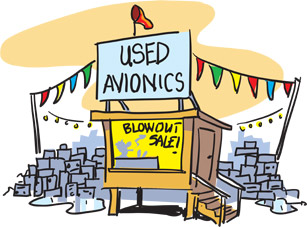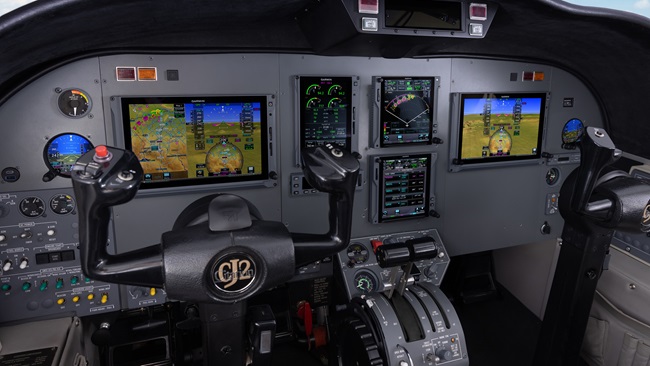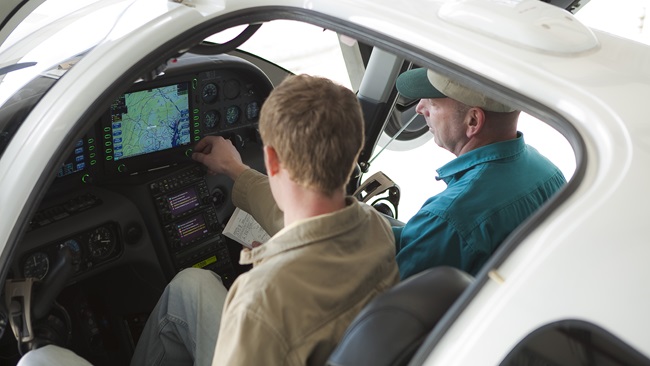Avionics: Buyer beware
Used avionics can be a deal, provided you do your homework
 Nowhere is the old expression “if it sounds too good to be true, it probably is” more appropriate than when buying used avionics. Good deals are out there, but getting one takes a lot of homework and a bit of patience.
Nowhere is the old expression “if it sounds too good to be true, it probably is” more appropriate than when buying used avionics. Good deals are out there, but getting one takes a lot of homework and a bit of patience.
The difference between a smart buy and a paperweight comes down to about four factors. Each piece you buy must work, it must work in your panel, the price has to be right, and your installer has to actually put it in your airplane. All that might sound easy, but potential problems abound.
Step number one is to get the advice of your installer or shop. That’s not a joke. Most installers are also dealers, and therefore make a few bucks on each new unit sold. But good shops should give you all the options, says Lancaster Avionics’ Todd Adams. “Communicate with the shop during the process, and use them as a guide,” he says. To help customers through the buying process, Adams will make sure the owner is asking the seller the right questions and getting the right components. He cites example after example of customers who have come to him with a used radio, but no rack or no connectors. The shop can make sure that the units you want will play nicely with each other, and that they have the expertise necessary to complete the job.
Those prepurchase conversations must also address cost. Because there’s a certain margin built in on pieces the shop sells you as a dealer—and a used install will mean no margin—the labor rate may be higher. There may also be hidden surprises that wouldn’t come up on a job with new units, so Adams offers estimates on used installs—as opposed to quotes on jobs with all-new gear.
Piper Aztec owner Jim Hiatt went through a big panel upgrade early last year using used avionics. He agrees that the most important thing is to “find someone to do the install first.” In his case that was a local technician with lots of experience who did the work on the side. Hiatt was able to reach out to the installer to find out exactly what he needed, including all those little components that pilots never see or know about that make avionics work together.
Adams cautions that some shops won’t even work with some pieces of equipment. There’s only one used ADF model his shop will do, for example. And some old radios are so expensive to repair or so unreliable that he won’t bother, knowing that the owner will come back and point the finger at him when it doesn’t work two months after the job is done.
Once you’ve engaged an expert and you know what to buy, the next step is patience, according to Hiatt. “It takes time and it takes effort to get it right,” he says. Hiatt surveyed the market over a period of months and then cut 10 percent off the going rate for each piece as his target. Then he just waited for the right deal. Although he ended up purchasing on eBay, it may not always be on an auction site.
Adams said he thinks people are generally paying too much on the online auctioneer. Other sources to check out are type clubs, avionics shops, and the local airport groups. But if you do buy through eBay, an advantage it offers is buyer protection, which Hiatt said guarantees the equipment is as advertised.
That advertisement should include a yellow tag, the universal sign that a technician has examined the unit and can attest that it meets 100 percent of the original factory specifications. Even so, expect your installer to do his or her own tests and confirm the equipment’s condition. Hiatt’s installer did, and Adams says a piece of equipment never goes in a customer’s airplane unless it’s tested prior (although he will give certain exceptions to national dealers he has experience with).
Ultimately every owner’s situation will be different depending on budget, mission, and airplane. Adams says most of his jobs these days are hybrid, with maybe the GPS/nav/com coming new from the factory and an audio panel or transponder sourced used from his stock or eBay. Hiatt estimates he saved 60 percent over all-new prices by waiting for the right deals. So long as you work with the installer through the process and don’t become a spontaneous shopaholic on a random Saturday night, used can be a viable way to go. Unless it’s a used autopilot. According to Adams, “The moons would have to align” to make that work.
Used condition descriptions
There are a variety of ways you may find a used unit being described. Lancaster Avionics’ Todd Adams puts them in to five categories:
Factory reconditioned/remanufactured. Probably the most reliable source. Usually comes with a six- to 12-month warranty
Overhauled. Usually a good buy. Usually associated with
instruments, and may come with a warranty.
Yellow tag. Good buy. May or may not come with a warranty. Indicates that it complies with FAA Form 8130-3, which means it has been tested and inspected and conforms with manufacturer specifications.
Green tag. Use caution. Indicates the unit is expected to be serviceable or repairable, but no guarantees of its condition are given.
As removed. Buyer beware. No testing or inspections have been completed, and nothing is known or implied about its condition.
Email [email protected]



